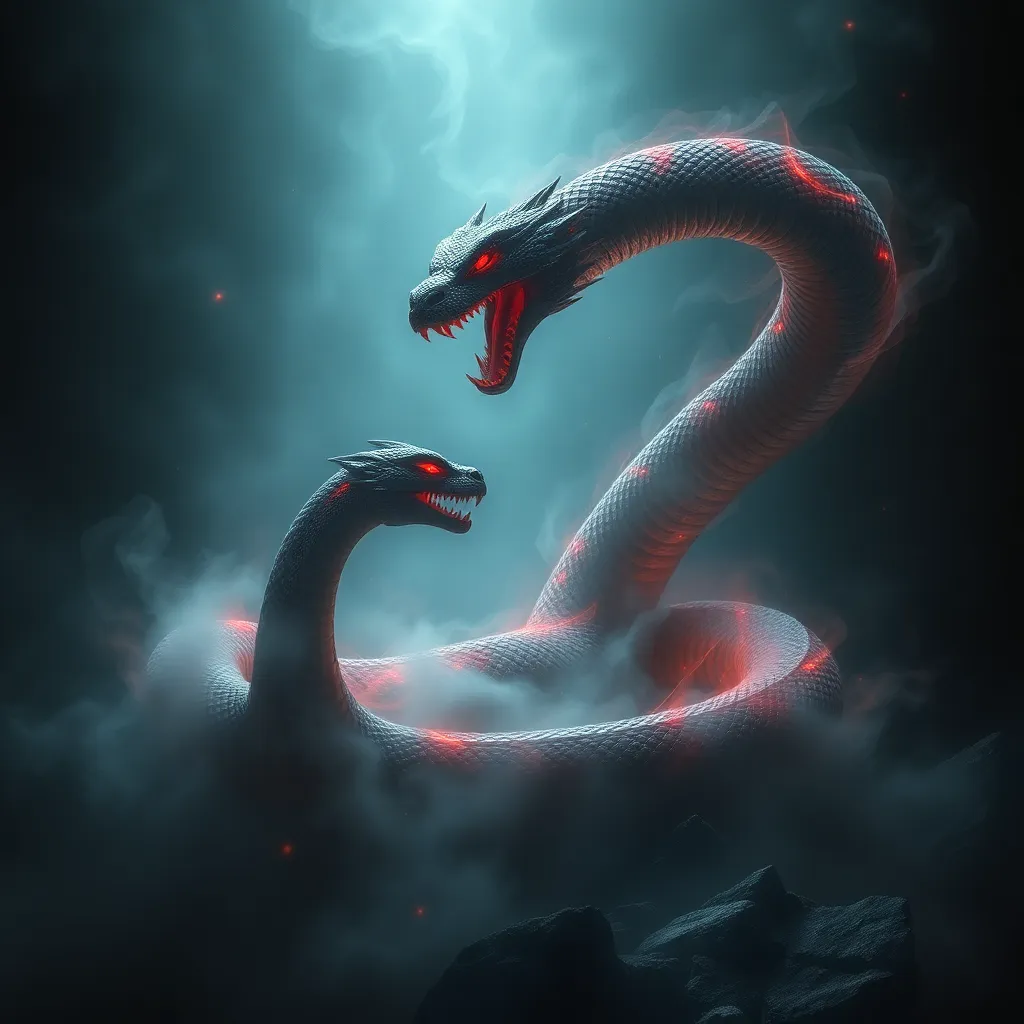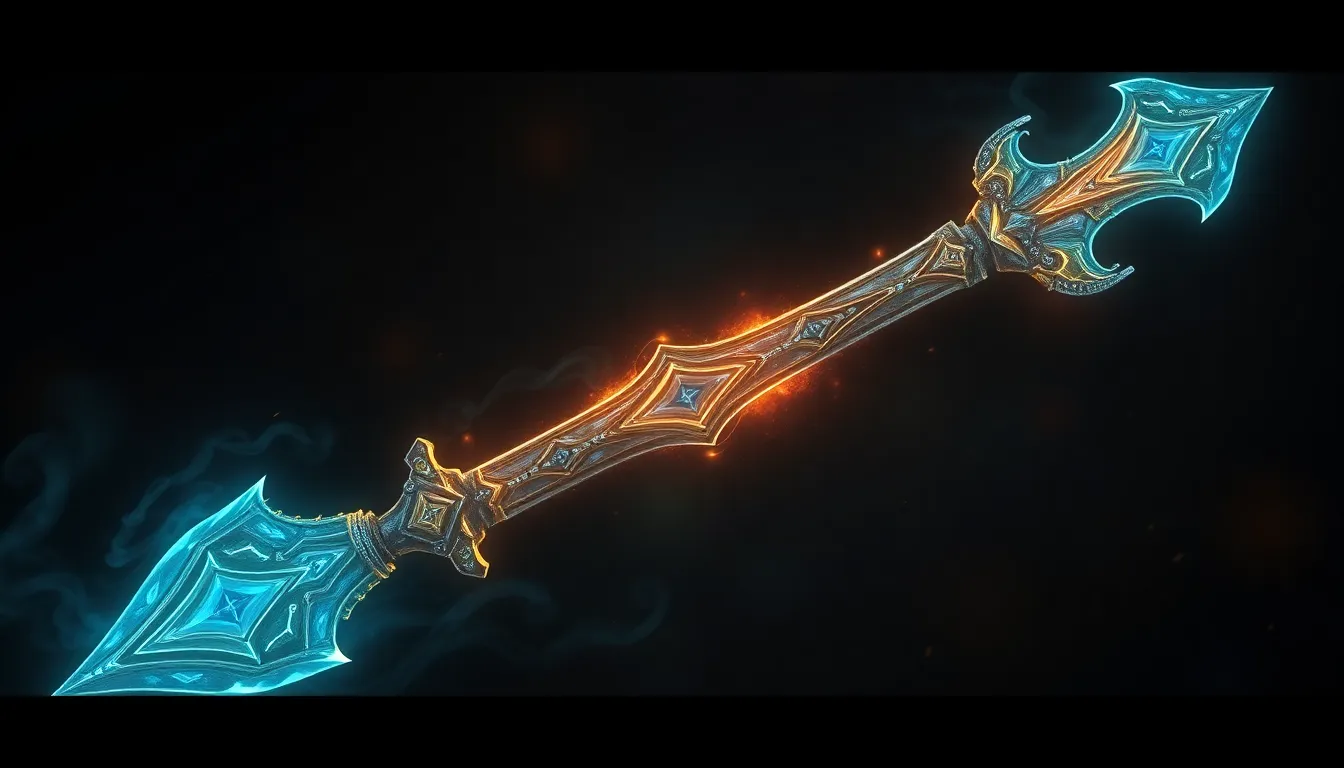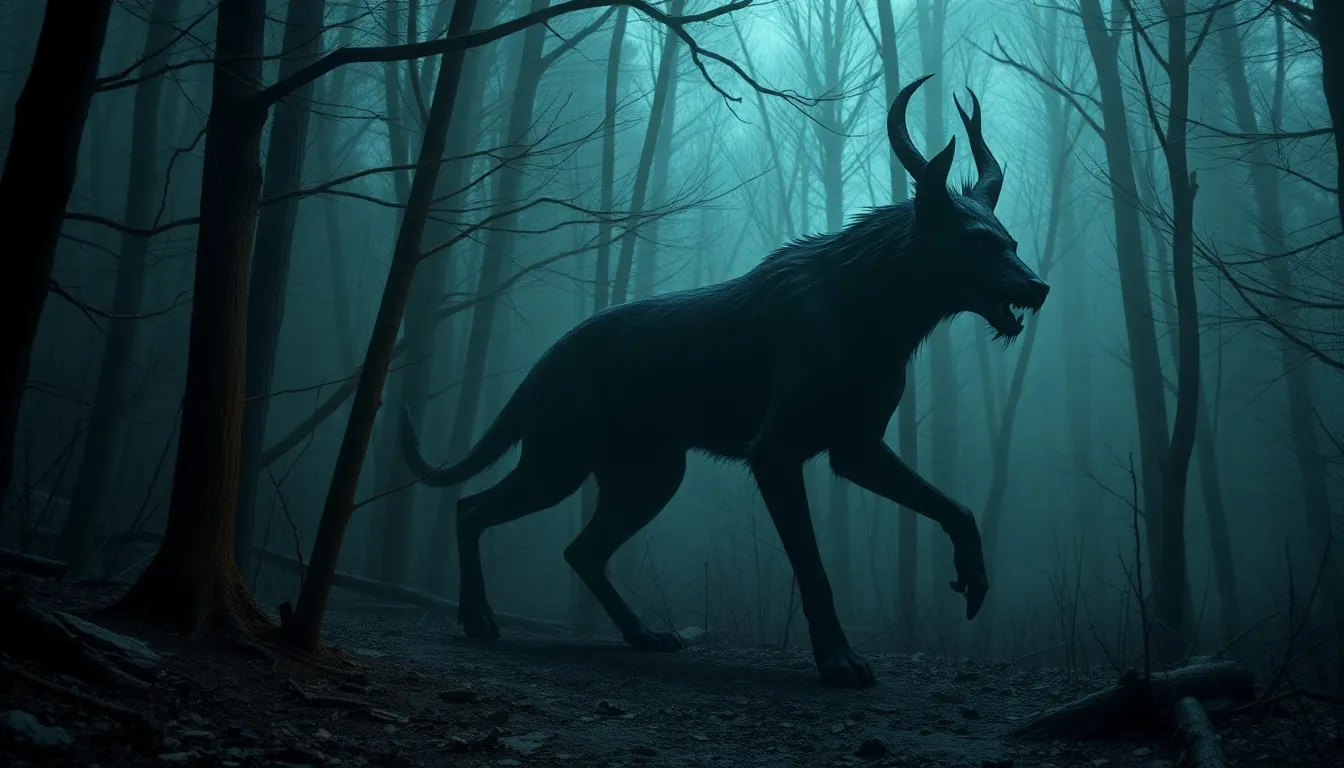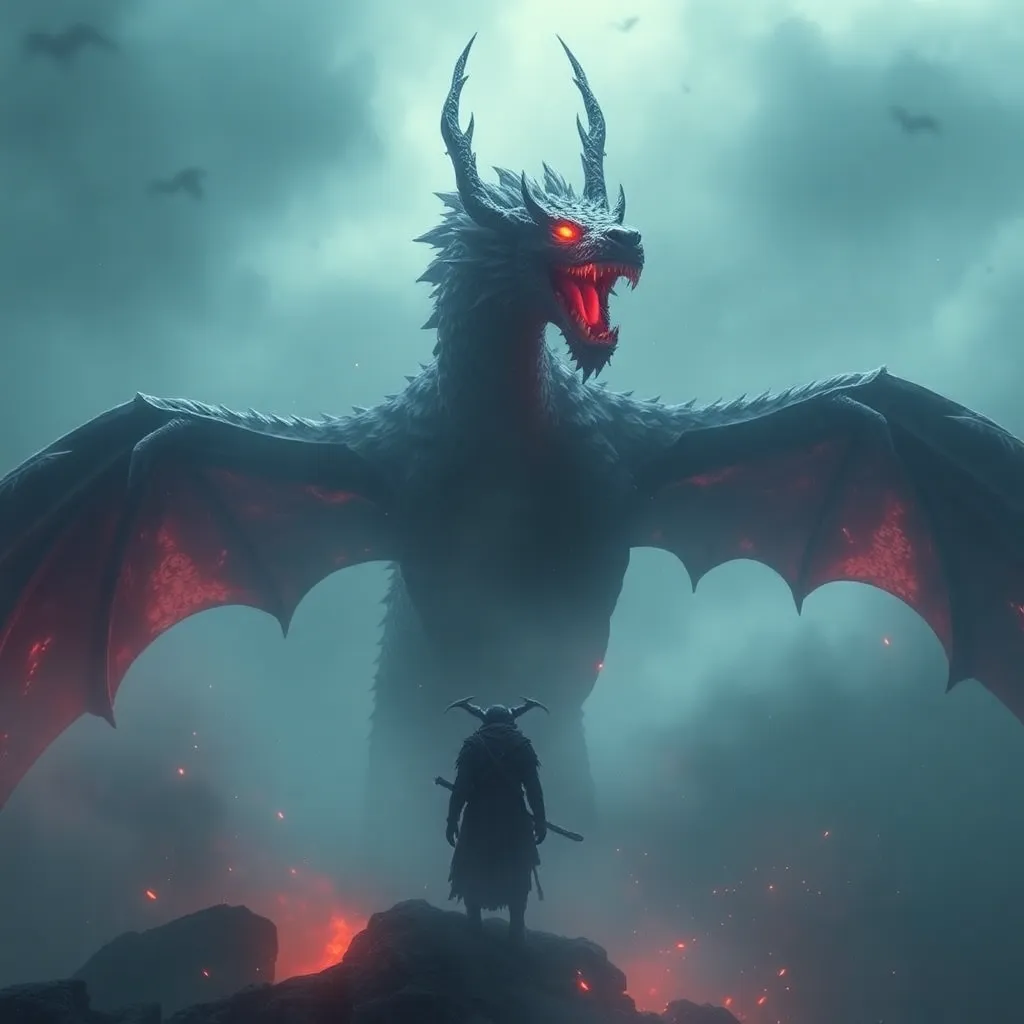The Serpent’s Shadow on the Tuatha Dé Danann: Níðhöggr’s Influence in Celtic Myths
I. Introduction
The Tuatha Dé Danann is a prominent group of deities and legendary figures in Celtic mythology, representing the rich tapestry of ancient Irish beliefs. They are often celebrated as the ‘People of the Goddess Danu,’ embodying various aspects of nature, magic, and the earth itself. In contrast, Níðhöggr is a formidable serpent from Norse mythology, known for his role in the mythos surrounding Yggdrasill, the World Tree. This article explores the intersections of Níðhöggr’s influence on the Tuatha Dé Danann and how these narratives reflect broader themes in Celtic mythology.
II. The Tuatha Dé Danann: Origins and Characteristics
The Tuatha Dé Danann are said to have descended from the skies, arriving in Ireland with great skill in magic and craftsmanship. Their origin story places them as a divine race that fought against the Fir Bolg and the Milesians, ultimately becoming the otherworldly protectors of the land.
A. Historical context of the Tuatha Dé Danann in Irish mythology
In Irish mythology, the Tuatha Dé Danann are portrayed as the gods of pre-Christian Ireland. They symbolize the natural world and its cycles, representing various elements such as the earth, water, and sky. Their narratives often intertwine with the landscape of Ireland, linking them inextricably to the country’s folklore and cultural identity.
B. Key figures and deities within the Tuatha Dé Danann
- Lugh: The god of light and craftsmanship, known for his many skills.
- Danu: The mother goddess and source of the Tuatha Dé Danann’s name.
- Brigid: The goddess of healing, poetry, and fertility.
- Dagda: The ‘good god,’ associated with abundance and the earth.
C. Their role as protectors of the land and embodiments of nature
The Tuatha Dé Danann are often depicted as guardians of the natural order, ensuring the fertility of the land and the well-being of its inhabitants. They are closely associated with the seasonal cycles and agricultural practices, demonstrating their deep connection to nature.
III. Níðhöggr: The Serpent of Norse Mythology
Níðhöggr, a dragon or serpent, is a significant figure in Norse mythology, primarily known for gnawing at the roots of Yggdrasill, the tree connecting the nine realms. His presence serves as a reminder of the destructive forces inherent in nature as well as the need for regeneration.
A. Description and symbolism of Níðhöggr
Níðhöggr is often depicted as a fearsome creature, embodying chaos and destruction. However, his role is not solely negative; he also symbolizes the cyclical nature of life and death, emphasizing the importance of decay in the process of rebirth.
B. Níðhöggr’s role in the Yggdrasil mythos
In the Yggdrasill mythos, Níðhöggr resides in Niflheim, where he feeds on the corpses of the dead. His actions threaten the stability of Yggdrasill, representing the inevitable decline that comes with life. This duality of creation and destruction resonates with the themes found in other mythologies, including those of the Tuatha Dé Danann.
C. Connections to themes of destruction and regeneration
Níðhöggr’s role encapsulates the idea that destruction is a necessary precursor to regeneration. This theme is prevalent in many mythologies, where the demise of one entity paves the way for another to rise. The cyclical nature of existence is a shared narrative between Norse and Celtic traditions.
IV. The Symbolism of Serpents in Celtic and Norse Myths
A. Common serpent motifs across both mythological traditions
Serpents often appear in both Celtic and Norse myths, symbolizing a range of concepts from wisdom to chaos. They serve as mediators between different realms, representing the connection between the earthly and the otherworldly.
B. The dual nature of serpents: wisdom vs. danger
In both traditions, serpents embody duality. They can be seen as wise guardians of knowledge and secrets, yet they also represent danger and destruction. This complexity makes them compelling figures in mythology.
C. Comparative analysis of serpent symbolism in Celtic and Norse contexts
While serpents in Celtic mythology, such as those associated with the goddess Brigid, often symbolize healing and protection, Níðhöggr represents a more destructive aspect. Despite these differences, both traditions highlight the significance of serpents as powerful symbols within their respective mythos.
V. Níðhöggr’s Influence on the Tuatha Dé Danann
A. Parallels between Níðhöggr and certain Tuatha Dé Danann figures
There are notable parallels between Níðhöggr and figures within the Tuatha Dé Danann. For instance, the conflict between Níðhöggr and the gods can be likened to the struggles faced by the Tuatha Dé Danann against their foes, illustrating a shared narrative of conflict and resolution.
B. Themes of conflict and resolution reflected in both mythologies
Both mythologies explore the themes of conflict and resolution, often depicting battles that lead to transformation. The struggles faced by the Tuatha Dé Danann mirror the challenges posed by Níðhöggr, suggesting that both narratives are reflective of the human experience.
C. The impact of Níðhöggr’s narrative on the tales of the Tuatha Dé Danann
Níðhöggr’s narrative may have influenced the storytelling surrounding the Tuatha Dé Danann, particularly in how they confront challenges and adversaries. The serpent’s role as a force of destruction and regeneration resonates with the trials faced by the Tuatha Dé Danann, emphasizing their resilience and adaptability.
VI. The Role of Nature and the Underworld
A. The connection between serpents, the underworld, and nature in both traditions
Both Níðhöggr and the Tuatha Dé Danann have strong ties to the underworld and nature. Serpents, as creatures that dwell in the earth, symbolize the hidden aspects of nature and the mysteries of the underworld, bridging the gap between life and death.
B. How Níðhöggr and the Tuatha Dé Danann interact with their environments
Níðhöggr’s gnawing at Yggdrasill represents a destructive force that ultimately contributes to the cycle of life. Similarly, the Tuatha Dé Danann are depicted as stewards of the land, interacting with their environment in ways that reflect respect and reverence.
C. Symbolic significance of the underworld in shaping cultural beliefs
The underworld in both mythologies serves as a realm of transformation and renewal. It is a place where souls are judged and reborn, shaping cultural beliefs about life, death, and the afterlife. This connection influences how both cultures perceive their relationship with nature and the cosmos.
VII. Modern Interpretations and Adaptations
A. Influence of Níðhöggr and the Tuatha Dé Danann in contemporary literature and media
Today, both Níðhöggr and the Tuatha Dé Danann continue to inspire literature, film, and art. Their stories are reinterpreted in modern contexts, highlighting themes of resilience and the battle between chaos and order.
B. Reimagining ancient myths in modern storytelling
Contemporary adaptations often seek to bridge the gap between ancient narratives and modern sensibilities, allowing new generations to connect with these timeless tales. These adaptations emphasize the relevance of mythological themes in addressing contemporary issues.
C. The relevance of these myths in understanding cultural heritage and identity
The influence of Níðhöggr and the Tuatha Dé Danann in modern narratives underscores the importance of cultural heritage. By revisiting these stories, we gain insights into the values and beliefs that shaped early societies, fostering a deeper understanding of our collective identity.
VIII. Conclusion
In conclusion, the exploration of Níðhöggr’s influence on the Tuatha Dé Danann reveals rich intersections between Nor



